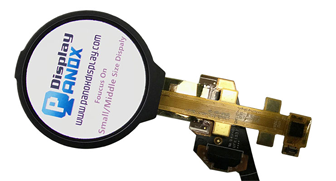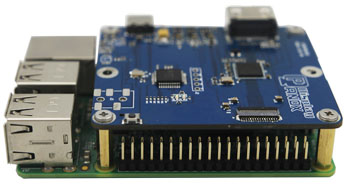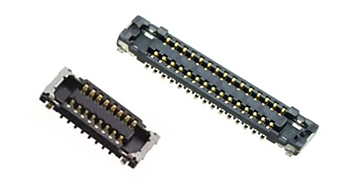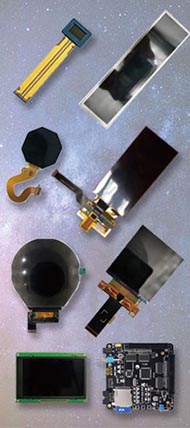VCSEL lasers and LEDs are both semiconductor light sources but differ fundamentally in emission type, beam quality, power efficiency, and applications. VCSELs emit coherent, narrow-spectrum laser light vertically with high power and fast modulation, while LEDs emit incoherent, broad-spectrum light with wider divergence and lower modulation speeds, making VCSELs ideal for high-speed communication and precision sensing.
What is a VCSEL laser and how does it work?
A Vertical Cavity Surface Emitting Laser (VCSEL) is a semiconductor laser diode that emits laser light perpendicular to the chip surface. It features a very short optical cavity formed by highly reflective distributed Bragg reflectors (DBRs) above and below the active region, which contains quantum wells where electrons and holes recombine to produce coherent photons. The photons oscillate vertically between the mirrors, amplifying light until lasing occurs. This design enables low threshold currents, high beam quality with a circular profile, and fast modulation speeds suitable for data communication and sensing.
What is an LED and how does it differ from a VCSEL?
A Light Emitting Diode (LED) is a semiconductor device that emits incoherent light through spontaneous emission when current flows across its p-n junction. LEDs produce broad-spectrum light over a wide angle (typically 60° or more) with lower power density and slower modulation speeds compared to VCSELs. Unlike VCSELs, LEDs do not have a resonant cavity or mirrors to amplify light, resulting in non-coherent emission with a Lambertian beam profile.
How do the emission characteristics of VCSELs and LEDs compare?
| Feature | VCSEL | LED |
|---|---|---|
| Emission Type | Coherent laser light | Incoherent spontaneous emission |
| Beam Profile | Circular, low divergence | Wide-angle, Lambertian (diffuse) |
| Spectral Linewidth | Narrow (typically <1 nm) | Broad (tens of nm) |
| Emission Direction | Vertical to chip surface | Broad, hemispherical |
VCSELs’ narrow, coherent beam allows efficient coupling into optical fibers and precise sensing, while LEDs’ broad emission suits general illumination and simple detection.
Why are VCSELs more efficient than LEDs in optical systems?
VCSELs concentrate light into a narrow beam with low divergence, resulting in higher radiant intensity within a target field of view. This means VCSELs can deliver more usable power with less electrical input compared to LEDs. For example, VCSEL illuminators can transmit nearly twice the radiant intensity in a given field of view compared to LEDs, consuming about half the power for the same detected signal strength.
Additionally, VCSELs support high-speed modulation (hundreds of MHz to GHz), enabling advanced applications like 3D sensing and high-speed data communication, where LEDs are limited to modulation speeds below 30 MHz.
How do VCSELs and LEDs differ in modulation speed and applications?
VCSELs can be modulated at very high speeds due to their stimulated emission and resonant cavity design, supporting gigabit data rates essential for fiber optic communications and precise time-of-flight sensing. LEDs, relying on spontaneous emission, have slower response times and are typically used in low-speed or indicator applications.
| Application Area | VCSEL Suitability | LED Suitability |
|---|---|---|
| High-speed data comms | Excellent (up to 25 Gb/s and beyond) | Limited (up to ~200 Mb/s) |
| 3D sensing and LiDAR | Preferred due to beam quality and speed | Limited by broad beam and slow speed |
| General lighting | Limited | Excellent |
| Simple proximity sensing | Good | Good |
How do the active regions and thermal management differ between VCSELs and LEDs?
VCSELs have larger active regions with quantum well structures and require careful thermal management to maintain wavelength stability and prevent damage due to higher power densities. LEDs have smaller active regions and dissipate heat more easily, making them robust for continuous operation at moderate power.
Can VCSELs and LEDs be combined in hybrid systems?
Yes, hybrid systems use LEDs for broad illumination and VCSELs for precise, high-speed sensing or communication. This approach balances cost, power consumption, and performance in complex devices such as automotive driver monitoring and consumer electronics.
How does Panox Display support VCSEL and LED technologies?
Panox Display integrates both VCSEL and LED technologies into custom OLED and LCD display modules, controller boards, and sensing solutions. By sourcing premium components and offering OEM customization, Panox Display enables startups and enterprises to develop high-performance optical systems tailored for telecommunications, automotive, industrial, and wearable applications.
What are the cost considerations between VCSELs and LEDs?
While LEDs generally have lower chip costs due to simpler fabrication, VCSELs’ higher efficiency and better beam quality often reduce system-level costs by minimizing power consumption and simplifying optics. For applications requiring multiple LEDs to achieve a target power, VCSELs may offer a cost advantage overall.
Panox Display Expert Views
“VCSEL and LED technologies each have unique strengths that meet different application needs. At Panox Display, we emphasize selecting and integrating the optimal light source for each project, ensuring efficiency, reliability, and performance. Our expertise in combining VCSELs and LEDs with advanced display and sensing modules empowers clients across diverse industries to innovate confidently and cost-effectively.”
Conclusion
VCSEL lasers and LEDs serve complementary roles in modern photonics. VCSELs provide coherent, high-power, and fast-modulated laser light ideal for telecommunications, 3D sensing, and precision applications. LEDs offer broad-spectrum, wide-angle illumination suited for general lighting and simple detection. Understanding their differences in emission, efficiency, modulation, and integration helps engineers design optimized optical systems. Panox Display’s commitment to premium sourcing and tailored OEM solutions supports clients leveraging both technologies for cutting-edge innovation.
Frequently Asked Questions
What is the main difference between a VCSEL and an LED?
VCSELs emit coherent laser light vertically with narrow linewidth and high beam quality, while LEDs emit incoherent, broad-spectrum light over a wide angle.
Can VCSELs be used for high-speed data communication?
Yes, VCSELs support modulation speeds in the hundreds of MHz to GHz range, enabling gigabit and higher data rates.
Are LEDs or VCSELs better for 3D sensing?
VCSELs are preferred due to their narrow beam, higher power density, and fast modulation, which improve sensing accuracy and range.
How does Panox Display assist with VCSEL and LED integration?
Panox Display provides OEM services integrating these light sources with custom displays and electronics, delivering reliable, high-performance solutions.
Do LEDs require less thermal management than VCSELs?
Generally, yes. LEDs dissipate heat more easily due to smaller active regions, whereas VCSELs need careful thermal design to maintain performance.
















